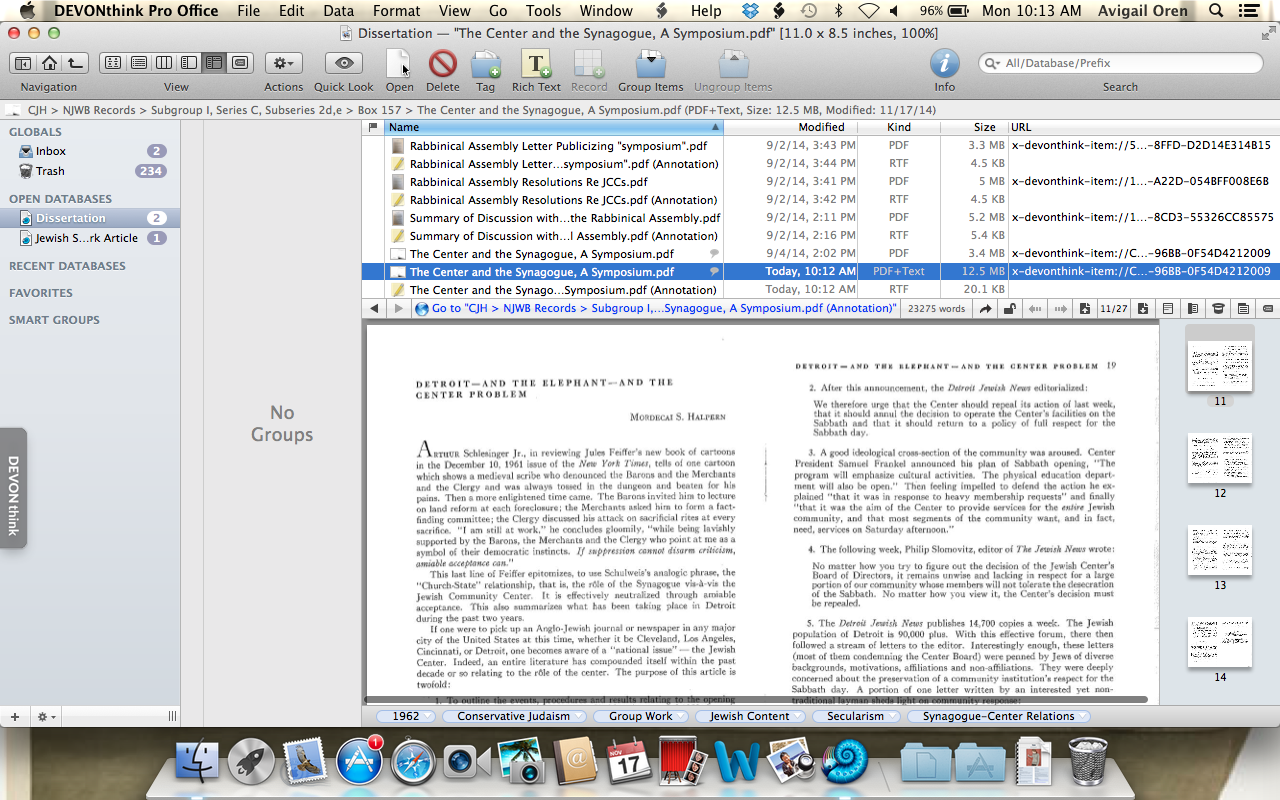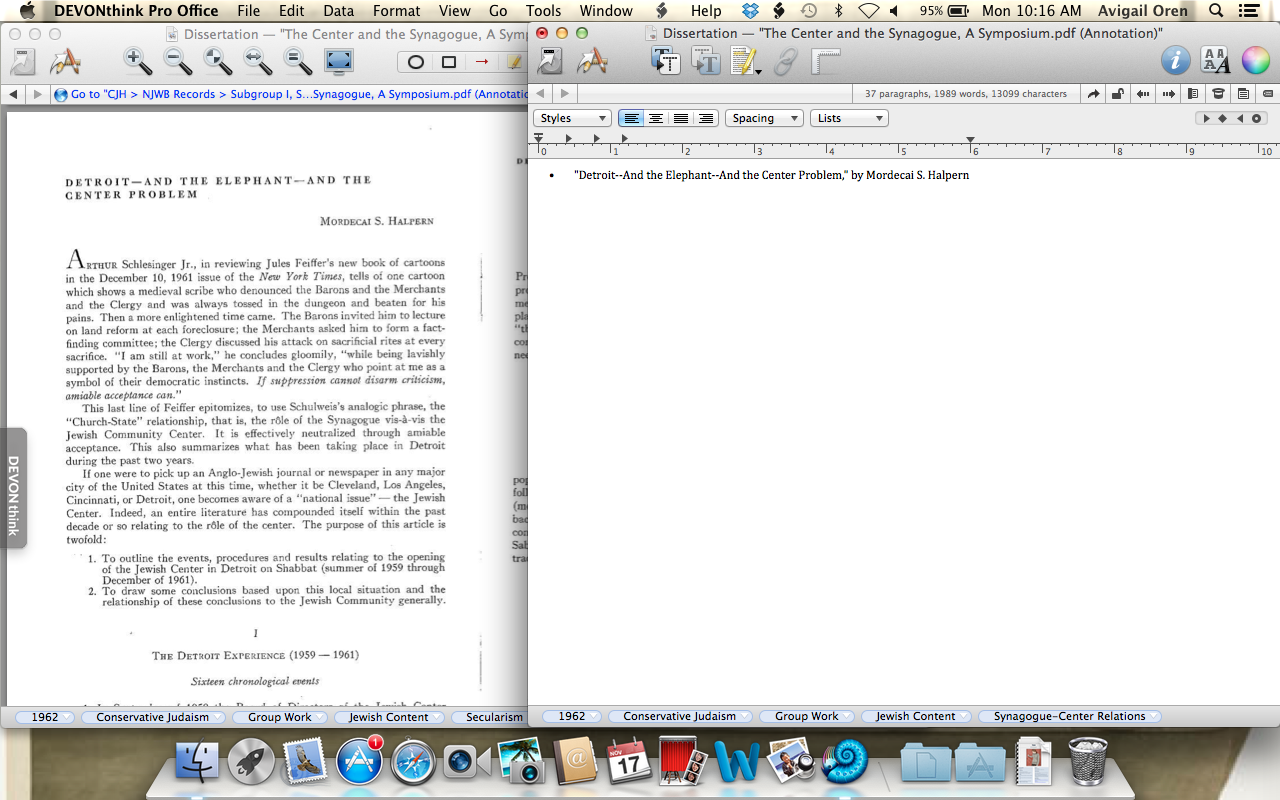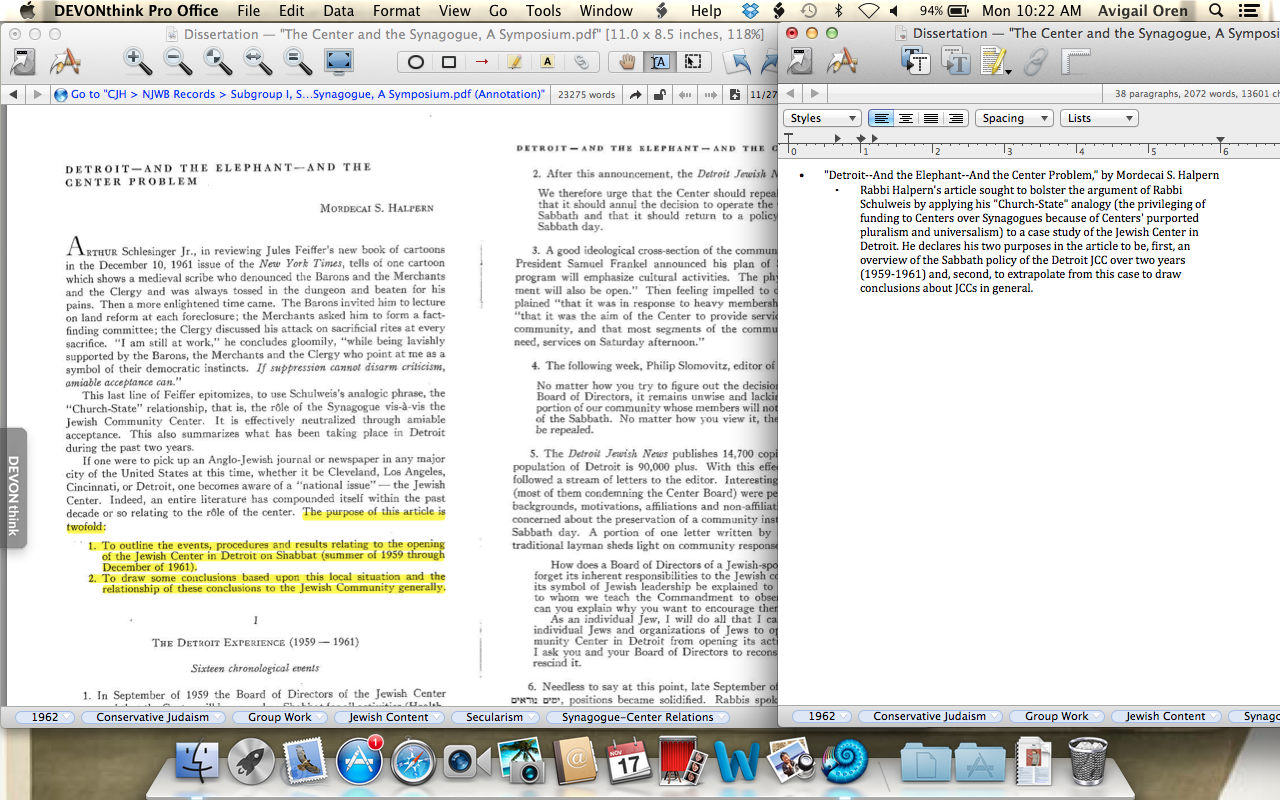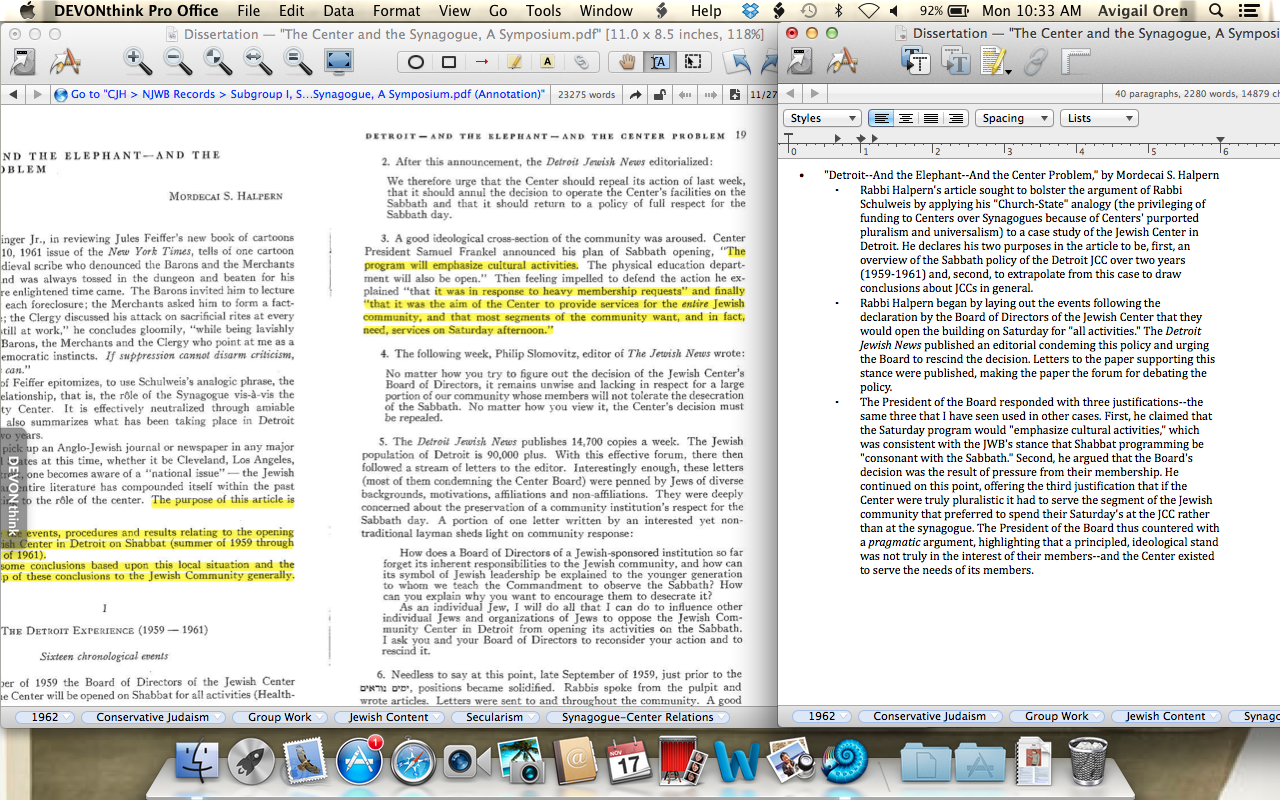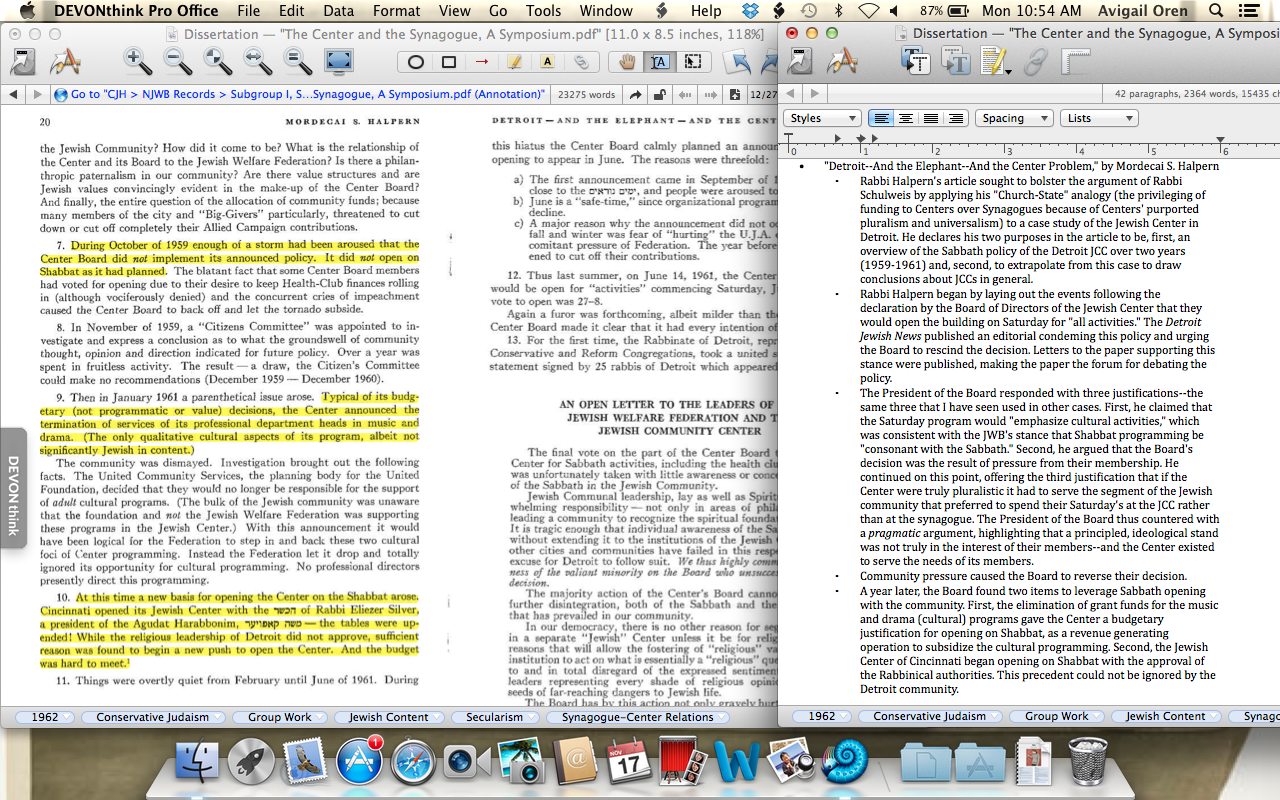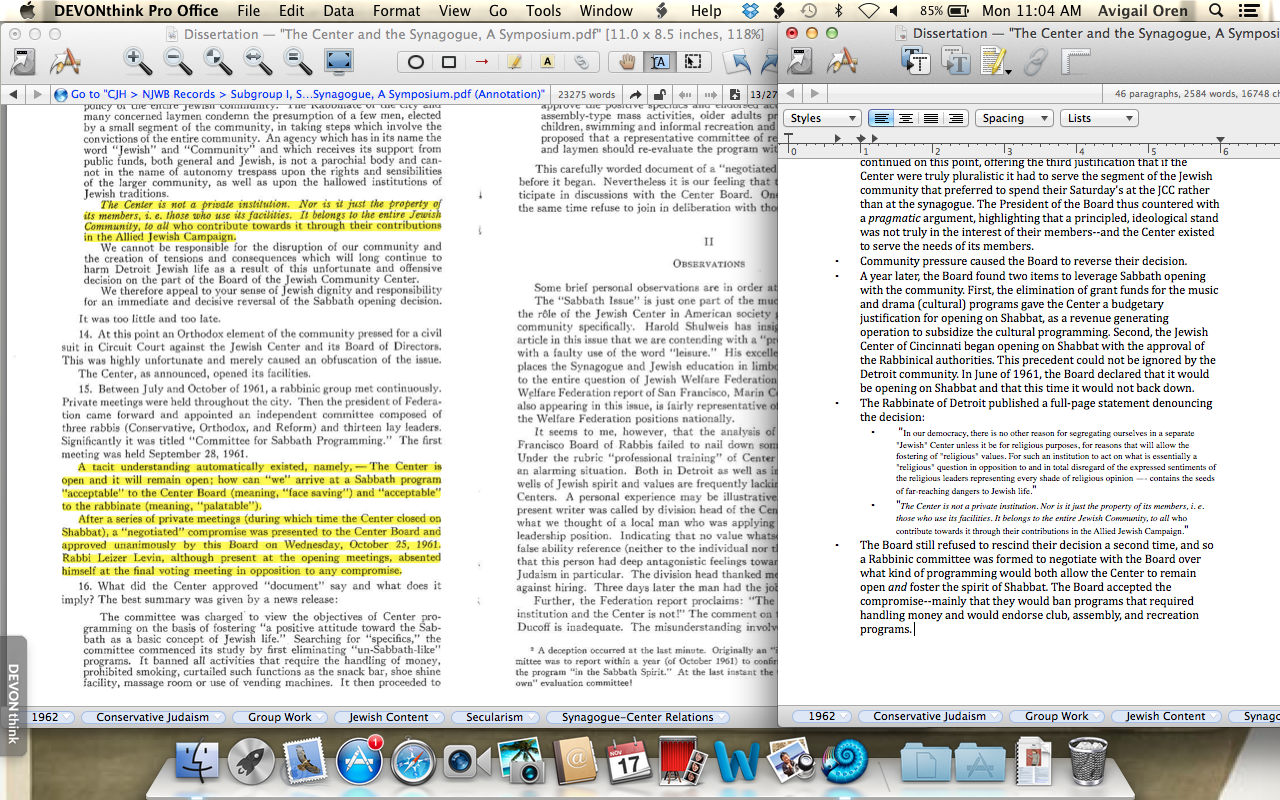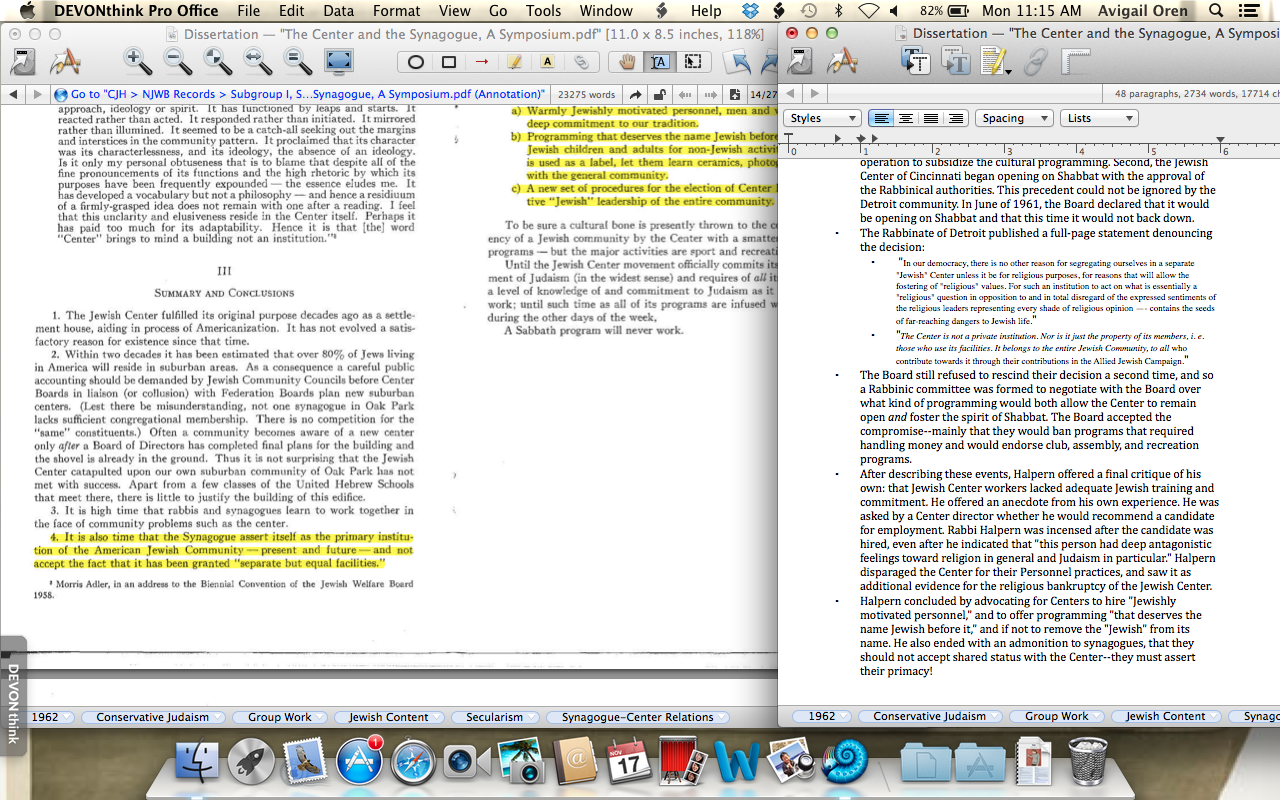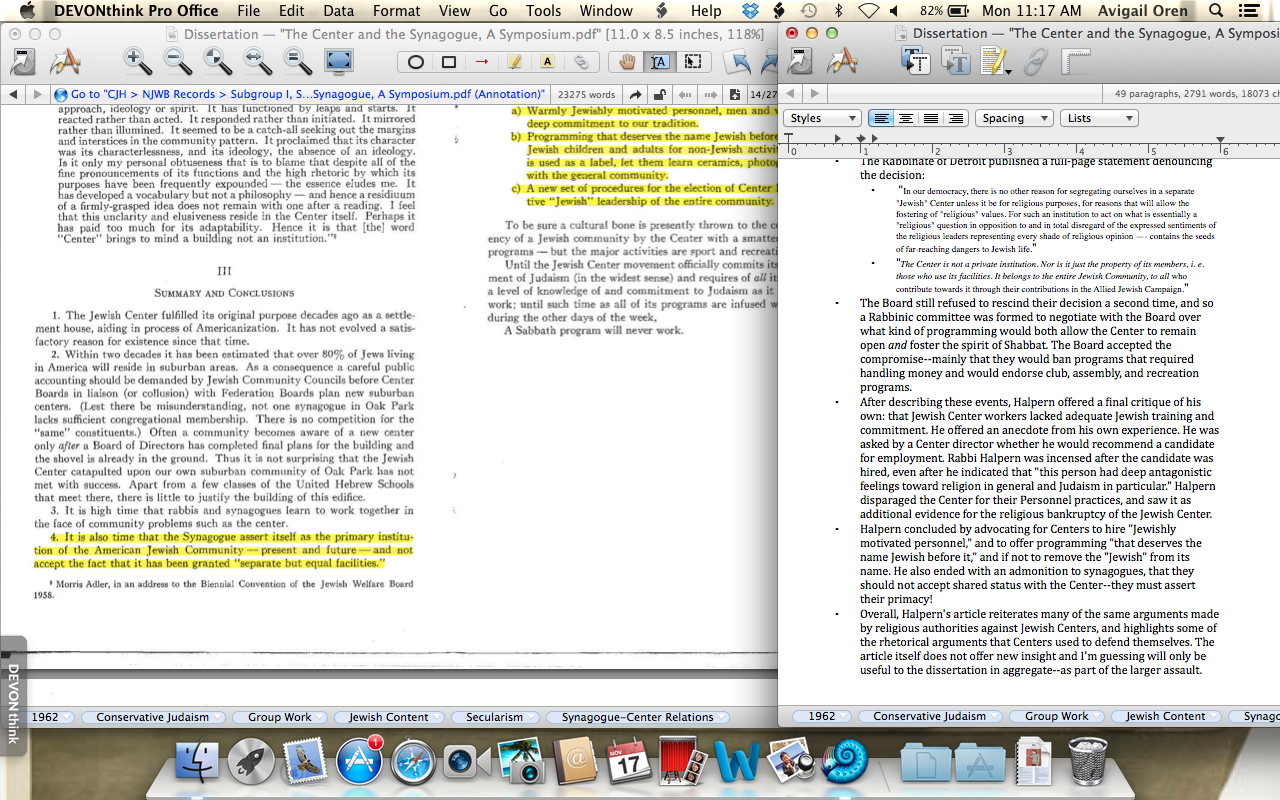Even with all of the clarity a pristinely organized database bestows upon a researcher, the soul-crushing volume of information necessitates additional strategies to help move the most important knowledge into the foreground. Two methods that I have used to help me keep track of details are making a chronology and making an index.
A chronology is a glorified timeline, a visual representation of change. It highlights patterns (economic growth!) and major disruptions (coup d'etat!). A well-done chronology is a valuable reference when you want to contextualize an event or debate within the larger history of what you're studying. For example, I created a chronology of the YM-YWHA of Washington Heights from its founding in 1917 up until 1980, the final year for which I have records. Since I want it to be a simplification of my notes, I do not record every detail I know about what happened in each year. I choose special events, like changes in leadership or the inauguration of a program, or notable debates, like whether to establish draft counseling and condemn the Vietnam War. That way, when I read a document about New York City's fiscal crisis in 1975 I can quickly turn to my chronology and see how the Y reacted to the threat of budget cuts for their municipally funded programs.
In some unknown future, when I invent a machine to add hours to the day, I plan to create chronologies for other institutions I study in the dissertation (like the Jewish Welfare Board). I'll also write one for the history of New York City. Luckily my doctoral exams taught me the broad sweep of American history during the postwar decades, so I don't have make a macro-level timeline. I could imagine that a researcher could also benefit from creating chronologies for historical actors important to their study. A "master" chronology of all the actors and organizations in a given project would be quite an undertaking, but could prove valuable.
What I refer to as an index is my own personal encyclopedia of the historical actors and debates that appear in my work. It's hard to keep track of all the leaders in all of the major Jewish institutions in New York City (plus all the national organizations!) and so I like to have a handy document with the basic details on the most important people. I list whatever "vitals" about them that I can find: their birth and death dates, occupation, marital status and children (if relevant), and where they lived. I also note the organizations with which they were affiliated, especially if they served on a Board of Directors. If they were involved in a major debate, I write down what position they took (for example: X was in favor of opening the JCC on Saturdays). Basically, I commit to the index any information I think I will need if I have to jog my memory about an individual's identity. I try to make entries for most of my historical actors, even when I think to myself, "how could I forget this person!" Many of the individuals I study have similar sounding names, and it's possible that I could mix them up. Or, I could mistakenly associate someone with an organization that they didn't belong to. Keeping track of basic information in an index saves me from having to look through pages and pages of notes to verify small details like that.
Again, these are tedious extra steps that often cause me to shake my head and wonder if it's worth it... the last thing I want to do is waste my time! From experience, however, chronologies and indices become valuable reference tools that I rely on throughout the duration of a project.
